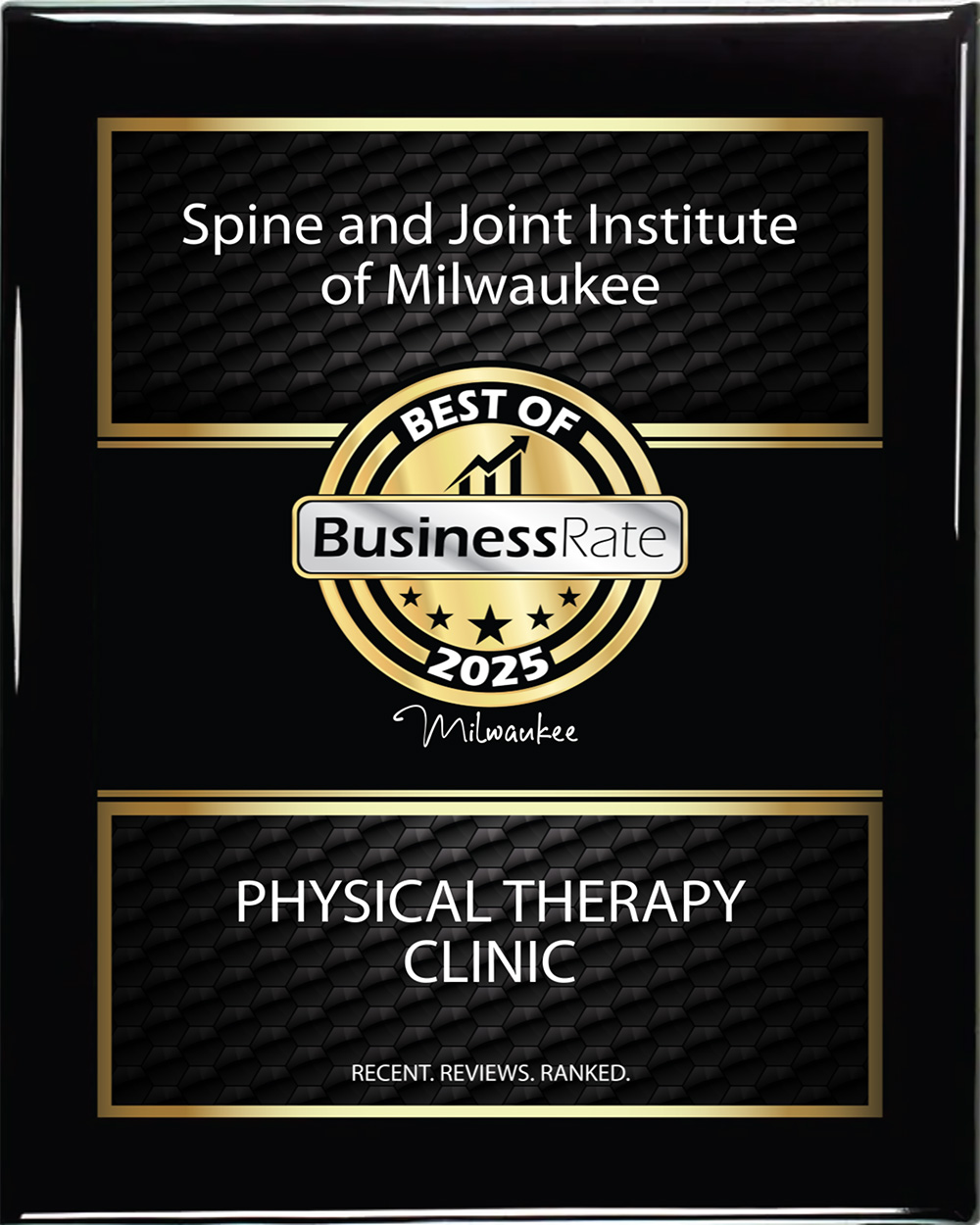From repetitive motions and heavy lifting to workplace accidents, workers can sustain neck injuries in numerous situations. Neck injuries could happen suddenly or over an extended period, ranging from mild strains to severe trauma. When a worker injures their neck, it could restrict their movement, limiting their ability to work and turning everyday tasks into a struggle. We know how much a neck injury and neck pain from work can impact a victim’s life, and we’re here to help.
When a worker suffers neck trauma on the job, they may be entitled to workers’ compensation benefits from their employer. However, navigating the workers’ compensation claims process should be the least of their concerns as they heal from their work injury and manage their neck pain. At Spine and Joint Institute of Milwaukee, our neck injury specialists provide patients with the comprehensive care they need while building their workers’ compensation claim documentation to secure recovery.

The two main types of spinal cord injuries are complete and incomplete injuries. These classifications help describe how much of the motor and sensory functions are affected. Additionally, injuries are often identified by the specific vertebrae involved.
Complete spinal cord injury involves a total loss of sensation and motor function below the level of the injury. There is minimal to no function in the muscles and nerves below the injury site. The injured person may experience paralysis and loss of sensation on both sides of the body.
Incomplete spinal cord injury means that there is some remaining function and sensation below the level of the injury. Incomplete injuries vary widely in terms of the degree of impairment. Some individuals may retain significant motor and sensory functions, while others may have limited function.
Ignoring these signs could result in long-term damage and life-altering consequences. If you hurt your neck at work, schedule a consultation with a neck injury doctor at Spine and Joint Institute of Milwaukee today. If you or a loved one suffered neck trauma at work and are experiencing any of these seven symptoms, seek medical attention immediately:

After suffering trauma to the neck at work, there are definite signs and symptoms that indicate a severe and potentially life-threatening injury.
Severe damage to the spinal cord could manifest in numerous ways and may require long-term care. Workers’ compensation benefits can help ensure that the full scope of your severe neck injury is covered now and in the future. If you experience any of the following symptoms, stop what you’re doing and seek emergency medical assistance immediately:
Rest and limited activity are often recommended to help injured tissues heal and prevent further strain that could exacerbate symptoms. Pain medication, prescribed or over-the-counter, may be necessary to manage neck pain and reduce inflammation. Pain medication for a neck injury is usually taken by mouth or through injection. Depending on the neck injury’s severity, surgery may be necessary. In addition, physical therapy, hot and cold therapy, bracing or support, and rehabilitation will likely be included in the treatment to ensure that the patient heals appropriately and safely returns to daily activities. Patients should follow their healthcare provider's recommendations closely and attend follow-up appointments to monitor progress and adjust the treatment plan as needed.
The timeline for a neck injury to heal can vary widely depending on the type and extent of the injury, and individual factors such as overall health and adherence to your treatment plan. Here are general timelines for some common neck injuries:
Mild neck strains or sprains may improve within a few days to a week with rest, ice, and over-the-counter pain medications. Complete recovery may take several weeks.
Mild cases may resolve within a few weeks with consistent treatment, while more severe cases may take several months for complete recovery.
Recovery from a herniated disc in the neck can take weeks to months. Specialized treatments such as physical therapy, medications, and rest are often recommended. In some cases, surgery may be considered.
The healing time for neck fractures depends on the type and location of the fracture. Stable fractures may take several weeks to months to heal, while more severe fractures may require longer recovery.
Injuries to soft tissues, such as muscles, ligaments, or tendons, may take weeks to several months to heal. Physical therapy and rehabilitation exercises may be recommended for the quickest recovery.
Recovery from spinal cord injuries can vary significantly based on the person and their unique situation. Some individuals may experience partial or complete recovery with rehabilitation, while others may have long-term effects. The recovery timeline for spinal cord injuries is often measured in months to years.
Everyone experiences neck trauma at work differently, and healing times vary. Age, overall health, adherence to treatment plans, and underlying medical conditions can influence the healing process. Proper medical evaluation and ongoing communication with a neck injury specialist are needed for monitoring progress and adjusting treatment.
If you have sustained a neck injury on the job, it's important to consult with a healthcare provider specializing in work injuries for a thorough assessment and personalized treatment plan. Follow their recommendations for rest, rehabilitation, and any prescribed medications to optimize healing as your worker’s compensation case progresses.

Adhere to the recommendations and treatment plan provided by the healthcare professional. This may include medications, physical therapy, rest, or other approaches. Follow any restrictions on activities or movements to aid in the healing process. Some medical advice you receive may include:


Certain occupations pose a higher risk of neck injuries due to the nature of the tasks involved. This includes repetitive movements, prolonged postures, or exposure to potential workplace hazards. Here are some occupations with a higher risk of neck injuries and why they have an elevated risk:
Construction Worker. Construction workers often perform tasks involving heavy lifting, repetitive motions, and working in awkward positions. They may also be exposed to falls or accidents, potentially leading to neck injuries.
Healthcare Workers. Healthcare workers, including nurses and caregivers, may experience neck injuries from lifting and transferring patients. Prolonged periods of bending or leaning over patients can also contribute to strain and discomfort.
Manual Laborers. Jobs involving manual labor, such as warehouse workers, movers, or agricultural workers, also require heavy lifting, repetitive movements, and awkward postures, increasing the risk of neck injuries.
Office Workers. Prolonged periods of sitting at a desk and working on computers can contribute to poor posture, leading to neck strain and discomfort. Incorrect ergonomic setups may exacerbate the risk.
Truck Drivers. Truck drivers can be at risk due to long hours of driving, leading to prolonged periods of sitting in the same position. Vibrations from the vehicle can also contribute to neck strain.
Electricians. Electricians may need to work in awkward positions and perform overhead tasks, leading to strain on the neck muscles. Additionally, the need to look up or work in confined spaces increases the risk of neck injuries.
Professional Athletes. Especially in contact sports like football or hockey, professional athletes may be at risk of neck injuries due to the physical nature of their activities. High-impact collisions or tackles can result in traumatic neck injuries.
Painters and Decorators. Professionals who work on painting or decorating projects often need to look up for extended periods or work in overhead positions, increasing the risk of neck strain.
Firefighters. Firefighters may face neck injuries due to the physical demands of their job, including carrying heavy equipment, navigating challenging environments, and potential exposure to traumatic incidents.
Manufacturing Workers. Workers in manufacturing settings may be at risk due to repetitive tasks, the use of heavy machinery, and exposure to vibrations that can contribute to neck strain.
It's important to note that the risk of neck injuries can be mitigated through proper training, ergonomic measures, and workplace safety practices. Employers in these high-risk industries should prioritize implementing safety protocols, offering training programs, and allowing employees to take breaks to prevent neck strain or injury.
To prevent neck injuries in the workplace, employers must prioritize their team’s health and safety. This involves implementing proper ergonomics, promoting a safety-conscious culture, and encouraging healthy work practices. Here are ten tips to help prevent neck injuries at work:
By implementing these preventive measures and promoting a safer workplace, employers and employees can significantly reduce the risk of neck injuries on the job. Regular training, ongoing communication, and a commitment to well-being are essential components of an effective injury prevention program.
When you suffer a neck injury at work, you want to return to your life pre-injury as soon as possible. Our work injury specialists at Spine and Institute of Milwaukee put your health and well-being first, providing you with the highest quality care and support for your injury as you navigate your healing process. We will document your treatment thoroughly for your workers’ compensation attorney, ensuring a stress-free recovery and safe return to work.
If you or a loved one has experienced neck trauma, contact Spine and Joint Institute of Milwaukee right away. Our team is here to provide the support and care you need to navigate the challenges of work-related injury recovery while documenting your treatment properly for your workers’ compensation claim. We work closely with our patients and help ensure a swift recovery, a stress-free workers' compensation claims process, and a safe return to work.

If you are not receiving proper care for your injury, you have the right under Wisconsin Workers' Compensation Law to choose your own doctor and to get a second opinion.